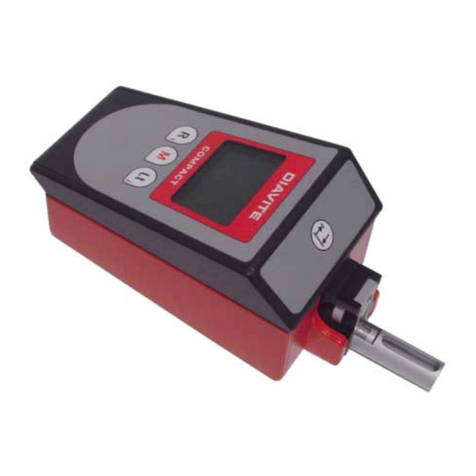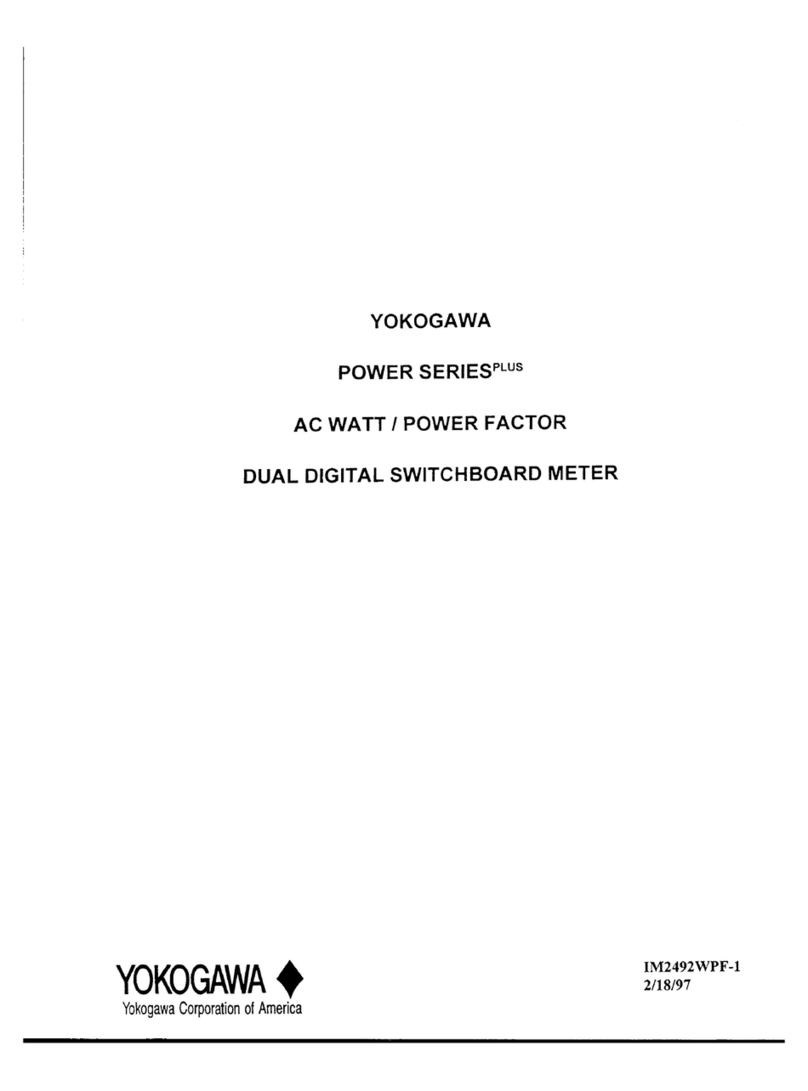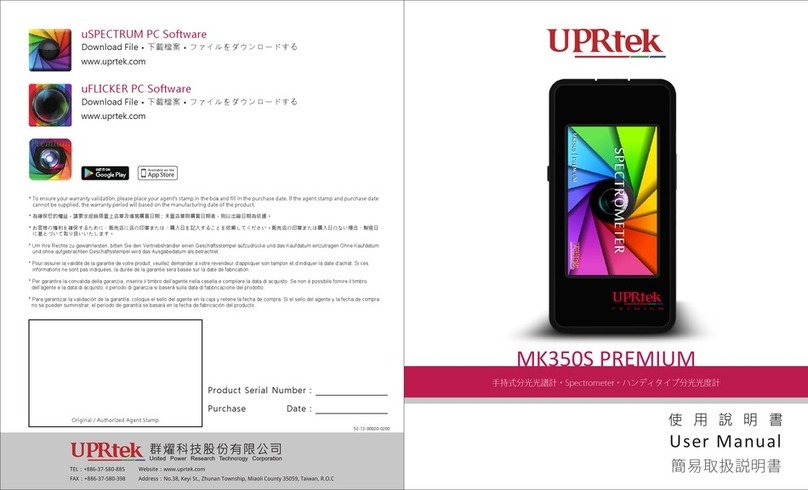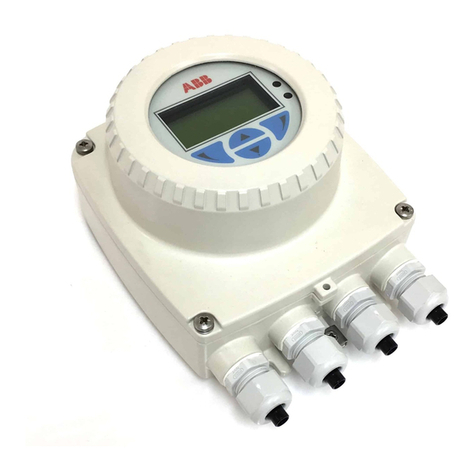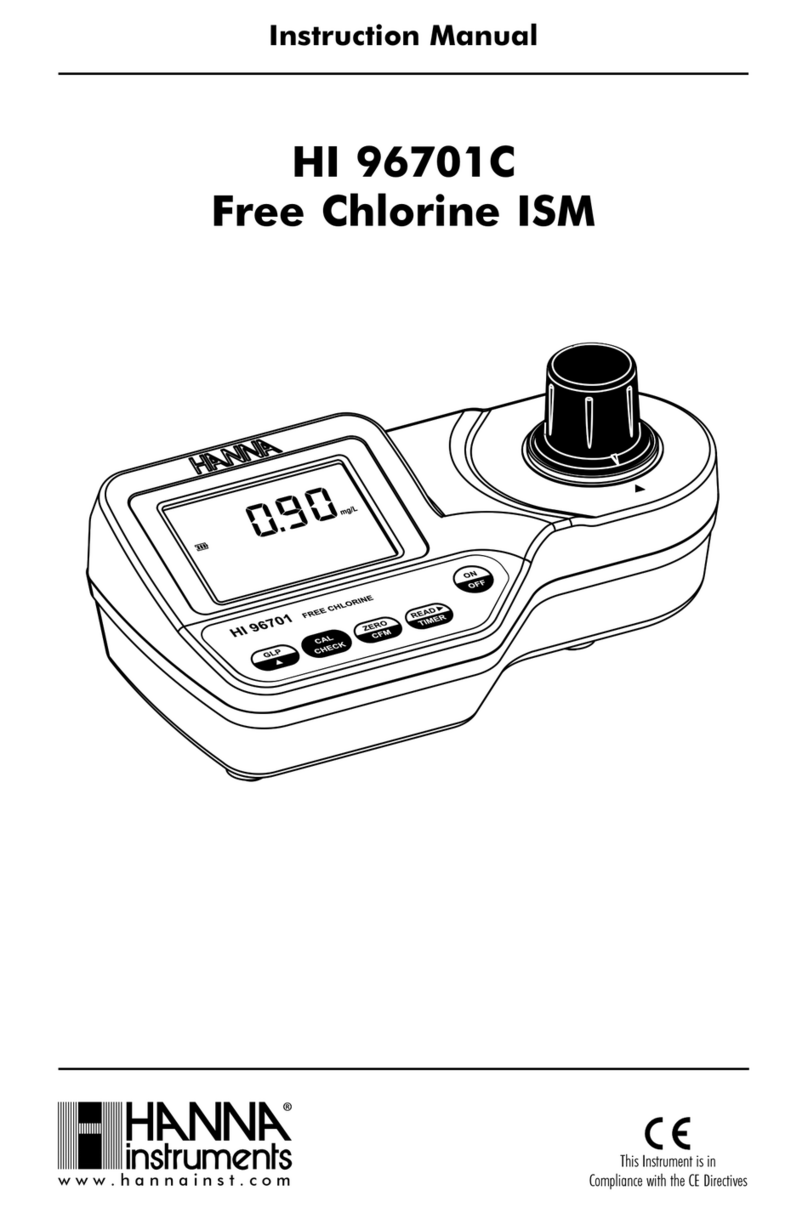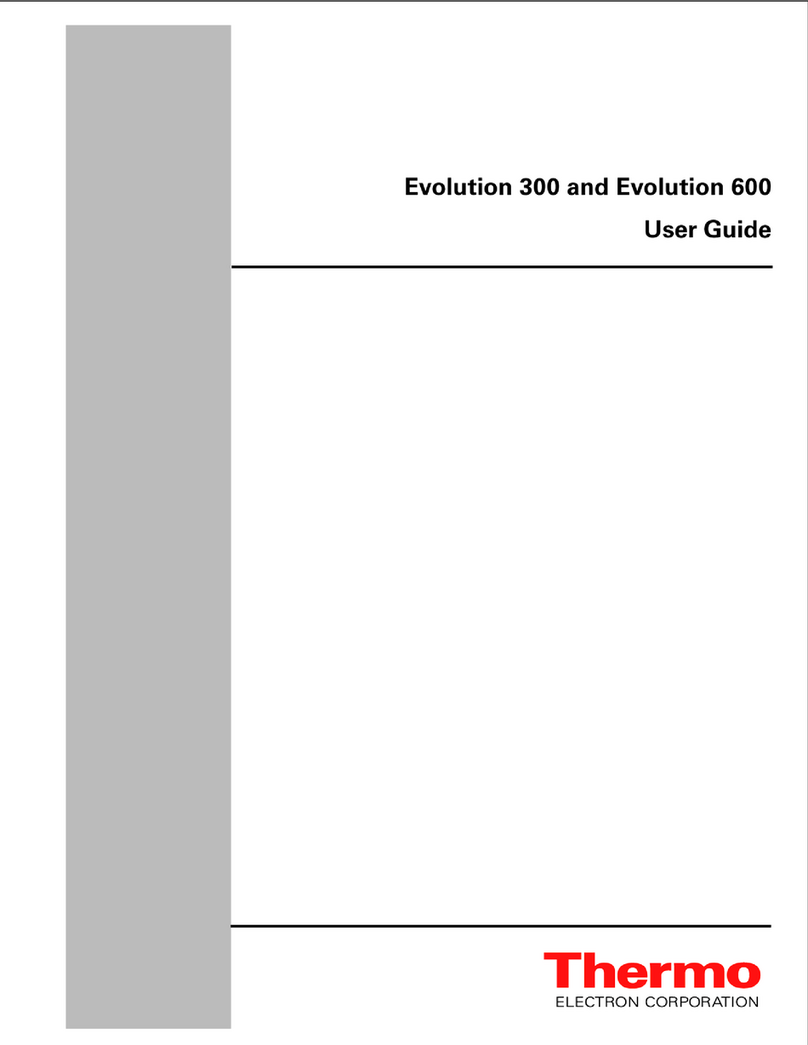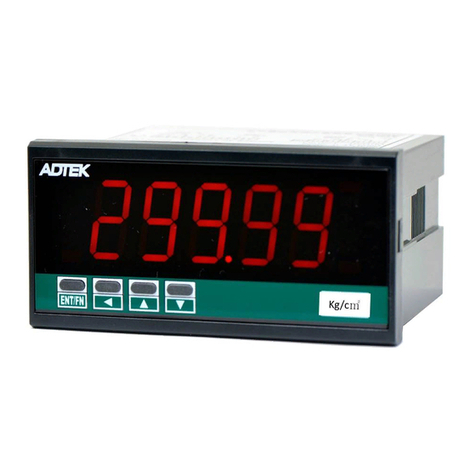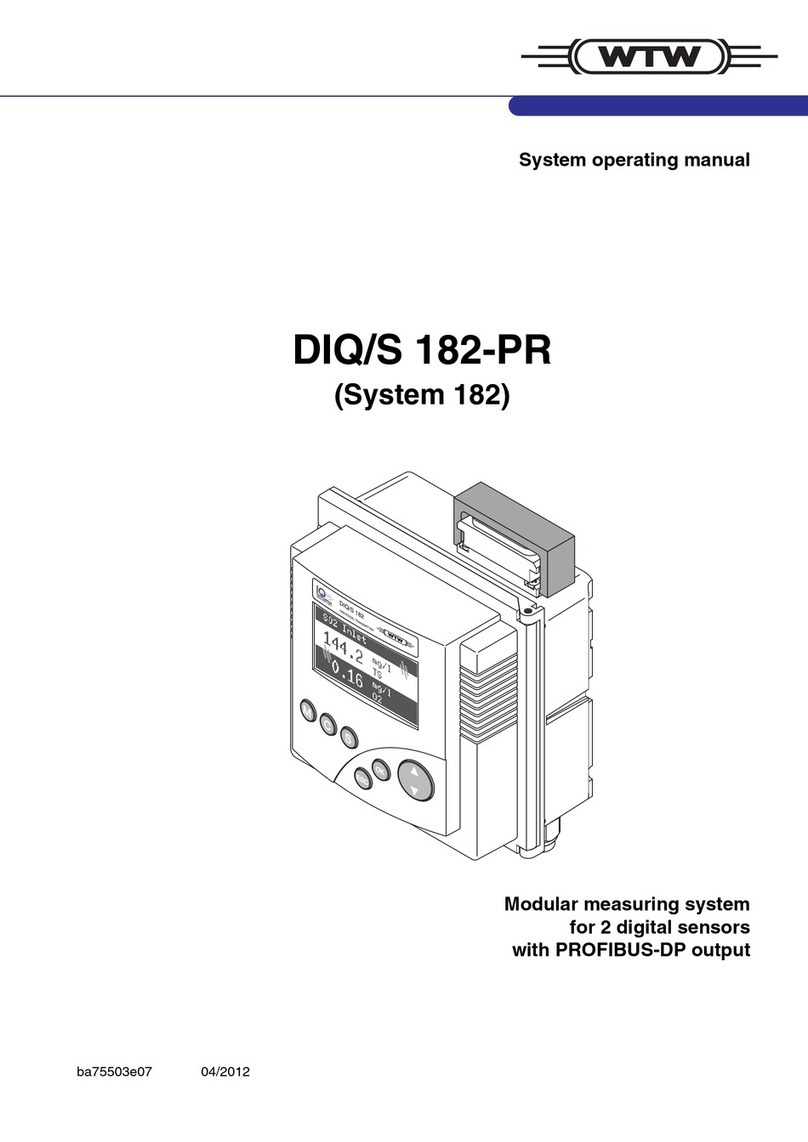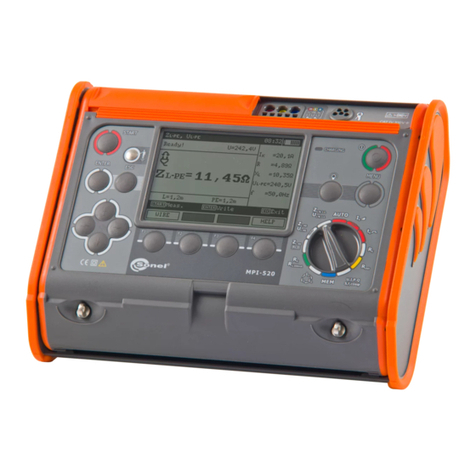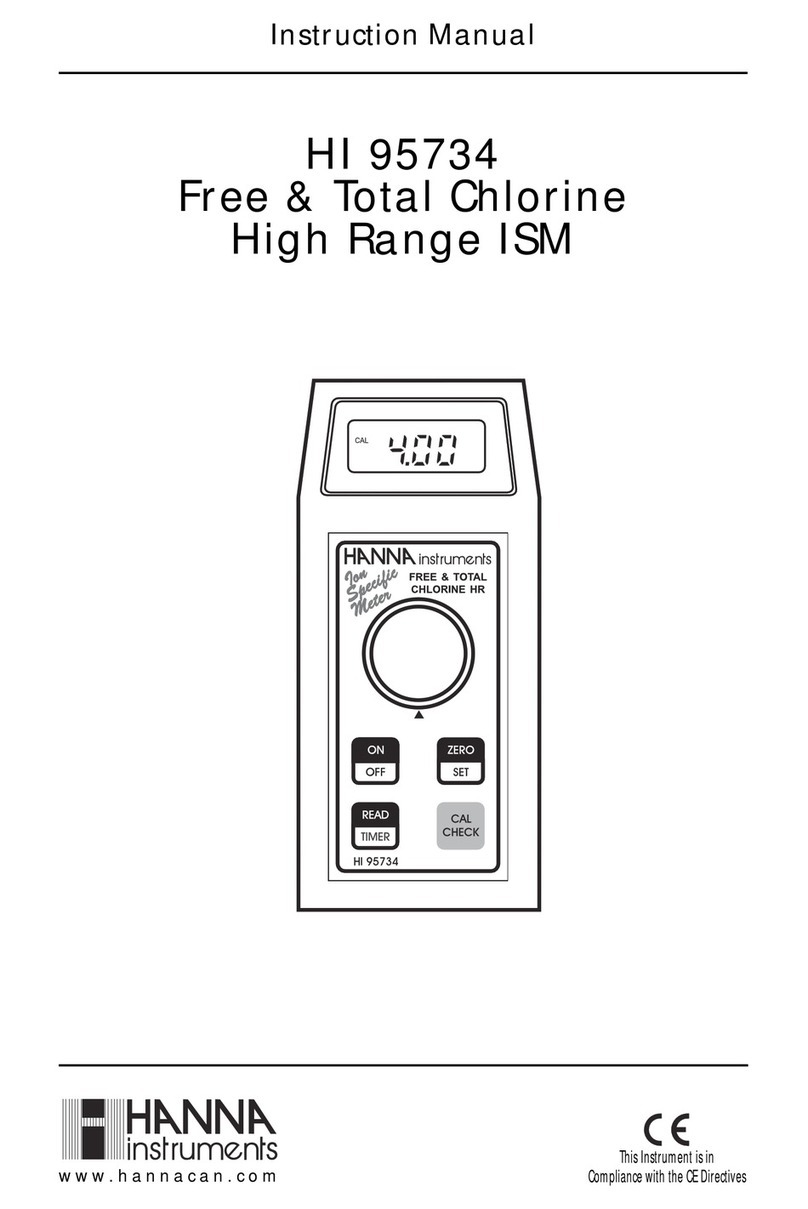AdValue Photonics AP-ML1 User manual

User Guide
AdValue Photonics Inc.
3708 E. Columbia Street, Suite 100
Tucson, AZ 85714, USA
www.advaluephotonics.com
Tel: 520-790-5468; Fax: 520-790-1158
2 MICRON HIGH POWER
MODE-LOCKED FIBER LASER
Model: AP-ML1
CLASS 4 LASER PRODUCT
Max. Power Average 1 W, Peak 8 kW
Pulse Duration <4ps
Wavelength: 2 Micron
Invisible Laser Radiation
Avoid eye or skin exposure to
Direct or Scattered Radiation

2/10
1. General Safety Instructions
In order to ensure safe operation and optimal performance, please note the following
cautions and warnings:
For installations operating Class 4 laser products, a laser safety officer should be
appointed. It should be the laser safety officer's responsibility to review the following
precautions and designate the appropriate controls to be implemented. Wherever
practicable, laser protective enclosures should be used for lasers of Class 4.
Before powering on, make sure the correct [power
supply] voltage is being applied.
Always use this product in conjunction with a
properly grounded power source.
The use of optical instruments with this product
will increase eye hazard.
Use of controls, adjustments or performance of
procedures other than those specified herein may
result in hazardous radiation exposure.
This product emits invisible laser radiation around
the 2 µm wavelength. The optical output may reach
1 W average power from the output port. Please
avoid direct eye exposure to beam, and use
appropriate laser safety eyewear when operating
this product.
Exercise caution to avoid/minimize specular
reflections because the reflections at this operation
wavelength are invisible.
Do not install or terminate fibers when laser is
active.
Any and all precautions should be taken to reduce
back reflections. Damage due to back reflections
will not be covered under Warranty. Properly clean
all connectors, angle cleave bare fiber, or apply a
proper fusion splice to reduce back reflections.

3/10
Training:
Operation of Class 4 laser systems can represent a hazard not only to the user but also to
other people over a considerable distance.
Because of this hazard potential, only persons who have received training to an
appropriate level should be placed in control of such systems. The training, which may be
given by the manufacturer or supplier of the system, the laser safety officer, or by an
approved external organization, should include, but is not limited to:
a. Familiarization with system operating procedures;
b. The proper use of hazard control procedures, warning signs, etc.;
c. The need for personal protection;
d. Accident reporting procedures;
e. Bio effects of the laser upon the eye and the skin.
Beam Paths:
The beam emitted by Class 4 laser product should be terminated at the end of its useful
path by a diffusely reflecting material of appropriate reflectivity and thermal properties or
by absorbers.
Open laser beam paths should be located above or below eye level where practicable.
The beam paths of Class 4 laser products should be as short as practicable, should have a
minimum number of directional changes, should avoid crossing walkways and other
access routes, and should, where practicable, be enclosed. The beam enclosure (for
example, a tube) should be securely mounted but preferably not rigidly attached to (or
provide support for) beam-forming components.
Specular Reflections:
Care should be exercised to prevent the unintentional specular reflection of radiation
from Class 4 laser products. Mirrors, lenses and beam splitters should be rigidly mounted
and should be subject to only controlled movements while the laser is emitting.
Reflecting surfaces that appear to be diffuse may actually reflect a considerable part of
the radiation beam specularly, especially in the infrared spectral range. This may be
potentially hazardous for longer distances than one would expect for purely (Lambertian)
diffuse reflections.
Special care needs to be taken in the selection of optical components for Class 4 lasers
and in maintaining the cleanliness of their surfaces. Potentially hazardous specular
reflections occur at all surfaces of transmissive optical components such as lenses,
prisms, windows and beam splitters.

4/10
Potentially hazardous radiation can also be transmitted through some reflective optical
components such as mirrors (for example, infrared radiation passing through a reflector
of visible radiation).
Eye Protection:
Protective eyewear should be comfortable to wear, provide as wide a field of view as
possible, maintain a close fit while still providing adequate ventilation to avoid problems
in misting up and provide adequate visual transmittance. Care should be taken to avoid,
as far as is possible, the use of flat reflecting surfaces which might cause hazardous
specular reflections. It is important that the frame and any side-pieces should give
equivalent protection to that afforded by the lens(es).
The following should be considered when specifying suitable protective eyewear.
a. Wavelength of operation;
b. Radiant exposure or irradiance;
c. Maximum permissible exposure (MPE);
d. Optical density of eyewear at laser output wavelength;
e. Visible light transmission requirements;
f. Radiant exposure or irradiance at which damage to eyewear occurs;
g. Need for prescription glasses;
h. Comfort and ventilation;
i. Degradation or modification of absorbing media, even if temporary or transient;
j. Strength of materials (resistance to shock);
k. Peripheral vision requirements;
l. Any relevant national regulations.
Exceptions to this are:
a. When engineering and administrative controls are such as to eliminate potential
exposure in excess of the applicable MPE;
b. When, due to the unusual operating requirements, the use of eye protection is not
practicable. Such operating procedures should only be undertaken with the
approval of the laser safety officer.
Protective Clothing:
Where personnel may be exposed to levels of radiation that exceed the MPE for the skin,
suitable clothing should be provided. Class 4 lasers especially are a potential fire hazard
and protective clothing worn should be made from a suitable flame and heat resisting
material.
Medical Supervision:
In the absence of national regulations, the following recommendations should be taken
into consideration:

5/10
a. If ophthalmic examinations are undertaken, they should be carried out by a
qualified specialist and should be confined to workers using Class 4 lasers;
b. A medical examination by a qualified specialist should be carried out immediately
after an apparent or suspected injurious ocular exposure. Such an examination
should be supplemented with a full biophysical investigation of the circumstances
under which the accident occurred;
Material Processing:
Specifications for laser products used to process materials may vary according to their
intended use. If the users wish to process materials other than those recommended by the
manufacturers, they should make themselves aware of the different degrees of risk and
hazards associated with the processing of such materials, and take appropriate
precautions to prevent, for example, the emission of toxic fume, fire, explosion or
reflection of laser radiation from the work piece.
Laboratory and workshop installation of Class 4 Laser Products:
Class 4 laser products can cause injury from either the direct beam or its specular
reflections and from diffuse reflections. They also present a potential fire hazard. The
following controls should be employed to minimize these risks.
a. Beam paths should be enclosed whenever practicable. Access to the laser
environment during laser operation should be limited to persons wearing proper
laser protective eyewear and protective clothing.
Beam paths should avoid work area, where possible and long sections of tubes
should be mounted so that thermal expansion, vibration, and other sources of
movements in them do not significantly affect the alignment of beam forming
components.
b. Class 4 lasers should be operated by remote control whenever practicable, thus
eliminating the need for personnel to be physically present in the laser
environment.
c. Good room illumination is important in areas where laser eye protection is worn.
Light colored diffuse wall surfaces help to achieve this condition.
d. Fire, thermally induced aberrations in optical components, and the melting or
vaporization of solid targets designed to contain the laser beam, are all potential
hazards induced by the radiation from Class 4 lasers. A suitable beam stop should
be provided, preferably in the form of an adequately cooled metal or graphite
target. Very high power densities can be handled by absorbing the radiation over
several reflections, each reflecting surface being inclined at such an angle to the
incident radiation as to spread the laser power over a wide area.
e. Special precautions may be required to prevent unwanted reflections in the
invisible spectrum from far infra-red laser radiation, and the beam and target area
should be surrounded by a material opaque at the laser wavelength. (Even dull
metal surfaces may be highly specular at the CO2 wavelength of 10,6 μm.)Local
screening should be used wherever practicable to reduce the extent of reflected
radiation.

6/10
f. The alignment of optical components in the path of a Class 4 laser beam should
be initially and periodically checked.
Outdoor and construction installation of Class 4 Laser Products:
Class 4 lasers in outdoor and similar environments should only be operated by personnel
adequately trained in their use and approved by the laser safety officer. To minimize
possible hazards, the following precautions should be employed.
a. Personnel should be excluded from the beam path at all points where the beam
irradiance or radiant exposures exceed the MPEs unless they are wearing
appropriate protective eyewear and clothing. Engineering controls such as
physical barriers, interlocks limiting the beam traverse and elevation, etc. should
be used wherever practicable to augment administrative controls.
An alternative solution is to place the operator inside a local enclosure which
provides protection from errant beams and gives good all-around visibility.
b. The intentional tracking on non-target vehicular traffic or aircraft should be
prohibited within the nominal ocular hazard distance.
c. The beam paths should, whenever practicable, be cleared of all surfaces capable
of producing unintended reflections that are potentially hazardous, or the hazard
area should be extended appropriately.
2. Limited Warranty
Certification
AdValue Photonics certifies that this product has been thoroughly tested and inspected.
AdValue Photonics has found this product to meet published specifications prior to
shipping. Upon receiving the product, check the packaging and contents for possible
damage that may have occurred in transit. If damage is apparent please contact AdValue
Photonics immediately.
AdValue Photonics warrants to the original purchaser that this product is free from
defects in materials and workmanship for 12 months from the date of shipment. The
warranty as stated shall be null and void upon (1) any modification of or amendment to a
Product by any person or entity other than AdValue Photonics, (2) misuse or abuse of a
Product by the customer (3) accident, disaster or event of force majeure, (4) causes
external to a Product such as, but not limited to, power failure or electrical power surges.
3. Repairs
In-Warranty Repairs
1. Refer all servicing to qualified AdValue Photonics personnel. All returned
products require a Return Merchandise Authorization (RMA) from AdValue
Photonics.

7/10
2. Products must be carefully packed in a suitable shipping container(s). Use the
original packaging whenever possible. Buyer assumes all responsibility for
products damaged in shipment to AdValue Photonics.
3. For all products returned to AdValue Photonics within the warranty period,
AdValue Photonics will examine the product and determine if the Product is
defective in material, workmanship, and/or fails substantially to conform to
AdValue Photonics’ specifications. AdValue Photonics will repair, replace the
defective part(s), or replace the Product. The balance of the original warranty
covers the repair under warranty.
4. Be sure to include, with the returned product, your ‘ship to’ address for the return
of the repaired product.
Out-of Warranty Repairs
If a failure occurs outside of the 12 month warranty period the unit should be returned to
the factory for evaluation, whereupon a quotation for the repair will be sent. After the
quotation is approved, repair will be completed. Any repaired or replaced out of warranty
components will be covered by a 90 day warranty. Domestic and International buyers are
responsible for two-way freight cost, duties, and taxes.
Maintenance
All maintenance and service should be carried out by qualified AdValue personnel.
Do not open the laser enclosure without permission from the Manufacturer.
Opening of this devise will void the Manufactures warranty.

8/10
4. Product Description
Description and Specification:
2 µm Mode-locked Fiber Laser, Model AP-ML1
1. Optical Characteristics:
This section describes the general characteristics of this product model. For performance of a specific unit
delivered to you, please see AdValue Photonics Product Delivery Data Sheet.
Parameter
Specification
Operating wavelength
1950 ±5nm
Average power
1 W (at 33 MHz)
Pulse width
< 3.5 picoseconds
Max. pulse energy
>35 nJ
Max. peak power
>10 kW
Pulse repetition rate
20-40 MHz (non-adjustable factory set)
Beam quality, M2
< 1.1
Output polarization
Random
Output beam diameter
5 mm
Output fiber and termination
Collimator terminated fiber cable of armored jacket and 0.5 m length
2. General Characteristics:
Parameter
Specification
Operating temperature
+10 to +35 oC
Storage temperature
-10 to +70 oC
Cooling
Forced air
Power requirement
AC 100~240 V (50/60Hz)
Power consumption
< 40 W
Warm-up time
20 minutes
Package dimensions
448.6(W) x 433(D) x 132.5(H) mm
3. Mechanical Drawings:

9/10
Operation of Laser Unit:
Turning the laser on:
1) Make sure that the keys are aligned to “Off” position and set the Power Adj. knob
to most counter-clockwise position (Figure 1).
2) Connect the power cord from the AC outlet to the back panel AC socket (Figure
2).
3) Turn on the Power switch (The green light will turn on, when power is on).
4) Turn the Seed Laser Key Switch to “On” (The green LED indicator will turn on
when properly enabled). Please notice there could be laser output after the Seed
Laser Key Switch is turned on.
5) Turn the Laser Power Key Switch to “On” (The green LED indicator will turn on
when properly enabled).
6) Slowly rotate the Power Adj. knob clockwise to increase the output power. To
reach maximum power, rotate the Power Adj. knob about 270˚, and allow the
Laser to warm up for 20-30 minutes.
Figure 1. Front Panel View
Figure 2. Rear Panel View
Power Switch
Power on/off
Seed Laser Key Switch
Enable and Disable seed laser
Power Adj. Knob
Control the output power from zero to maximum.
Remote Interlock Connector
Used for remote interlock
AC Socket
AC power input
Laser Power Key Switch
Enable and Disable laser output
Output Fiber
Laser Aperture
USB Connector
Used for current fine adjustment

10/10
Turning the Laser off:
1) Rotate the Power Adj. Knob counterclockwise until it stops.
2) Turn the Laser Power Key Switch to “Off”.
3) Turn the Seed Laser Key Switch to “Off”.
4) Turn Off the Power Switch.
USB Connector:
The USB connector is supplied to fine-adjust the pump current. This is only to be used
with AdValue Photonics approval and guidance. Proper software and drivers are required
to eliminate damage.
Remote Interlock:
If you leave the interlock connector (on the rear panel) open by disconnecting or breaking
the interlock cable, the laser will be shut down automatically. The laser can be turned
back on only if you recover the interlock connection and restart the product.
Table of contents

